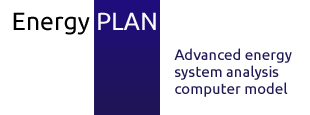New Zealand is highly dependent on fossil fuels for its transport sector, and in recent years the vulnerability of the New Zealand economy and society to its dependence on fossil fuels has been exposed. For example after the 2008 Global Financial Crisis, when the price of petrol and diesel rose sharply. Not only are there economic implications from this dependence, but the environmental impact from fossil fuel consumption is becoming increasingly apparent, as can be seen with anthropogenic climate change. If New Zealand is to avoid increased economic and social risk in the next few decades, the country should shift from fossil fuels to renewable energy sources.
This report investigates three options for New Zealand to partly shift away from fossil fuels, towards renewable energy in the electricity system, and light vehicle fleet by 2040. The study focuses on making the electricity system 100% renewable and switching 50% of the light vehicle fuel consumption to renewable energy by 2040. The alternative energy supply options for light vehicles that were assessed were: electric vehicles; ehanol/biodiesel; and methanol/DME.
Each scenario assessed in this study was done in EnergyPLAN. EnergyPLAN is a tool that was developed in parallel with the Choice Awareness Theory. The first strategy in the theory is about designing concrete technical alternatives, and EnergyPLAN allows the user to do this. It is a comprehensive tool that provides the possibility to model many different energy system configurations. The tool can be used to present state-of-the-art energy system analyses for 100% renewable energy systems, and it allows the user to determine the technical viability of the proposed energy system.
It was determined in this study that a 100% renewable electricity system in New Zealand is technically possible. Each scenario would consist of increased wind and geothermal electricity capacity, and instead of fossil fuel condensing power plants, a 1200 MW biomass condensing power plant would be required in order to meet peaking demands. The electric vehicle scenario would require a pumped hydro power plant to store some electricity for the electric vehicles. The ethanol/biodiesel scenario would not require an addition of pumped hydro but wind and geothermal would be increased to achieve a 100% renewable system. It is also possible to supply enough biomass for the biofuels in this scenario in New Zealand. The methanol/DME scenario would require electrolysers for producing hydrogen required for making methanol/DME. This would require the largest increase in wind capacity out of all the scenarios. This scenario is similar to the ethanol/biodiesel scenario but it relies more on electricity to produce the biofuel and less biomass. This means that this scenario could be implemented quicker since less biomass is required to grow over the coming years.
Contact: David Maya-Drysdale (drysdale@plan.aau.dk)



